Rabat, the capital of Morocco, is a city full of history and culture. Located along the Atlantic Ocean and the Bouregreg River, Rabat offers a unique blend of old and new. As one of Morocco’s four imperial cities, it showcases a mix of ancient traditions and modern living. Visitors can explore historical sites, such as the Hassan Tower and Kasbah of the Udayas while enjoying the comforts of a growing city.
Rabat is known for its calm atmosphere compared to other bustling Moroccan cities like Marrakesh. It’s a great place for both relaxation and adventure. You can stroll through the Andalusian Gardens or take a trip to the vibrant medina for shopping and delicious food.
In this guide, we will help you navigate the best ways to travel to Rabat, whether you are coming from overseas or from within Morocco.
Getting to Rabat
Rabat is easily accessible for both international and domestic travelers. Whether you are flying in from abroad or arriving from other Moroccan cities, there are plenty of convenient options for reaching the capital. Here’s a detailed look at how to get to Rabat.
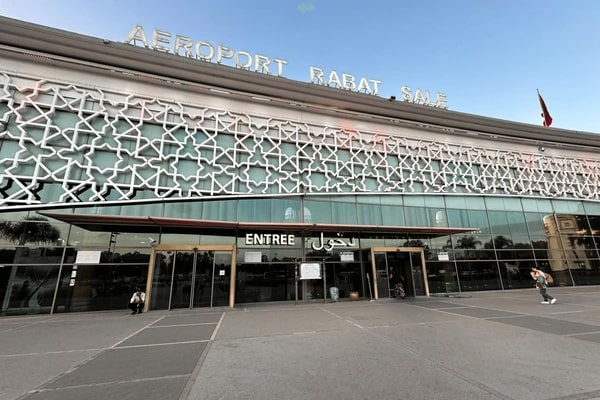
International Travel Options
Flying to Rabat-Salé Airport: Rabat-Salé Airport (RBA) serves as the primary airport for the city, located around 10 kilometers from the center of Rabat. Though smaller compared to airports in Casablanca or Marrakesh, it handles a steady stream of international flights, especially from Europe.
Direct Flights:
Rabat-Salé Airport has direct flights to and from major cities in Europe, including Paris, Madrid, Brussels, and London.
Airlines such as Royal Air Maroc, Air France, Ryanair, and Vueling offer regular flights.
From Europe: Cities like Paris (2.5-hour flight), Madrid (2-hour flight), and London (3-hour flight) have frequent and direct flights to Rabat, making it easy for European travelers.
From North America: Travelers from the U.S. and Canada will typically need to connect through European cities like Paris or Madrid, as there are no direct flights to Rabat from North America.
From the Middle East or Africa: Connecting flights through cities like Dubai or Istanbul are common for travelers coming from the Middle East or sub-Saharan Africa.
Airport Transfers and Transport Options to the City Center:
Once you land at Rabat-Salé Airport, several options are available to get you to the city center:
Taxis: Taxis are readily available outside the airport. It’s advisable to agree on a fare before the ride or ensure the meter is used. The cost to the city center is generally around 150-200 MAD.
Airport Shuttle Bus: The shuttle bus connects the airport to various parts of Rabat, including the city center. It’s a cheaper option compared to taxis but may take longer.
Car Rentals: Several car rental agencies operate at Rabat-Salé Airport. Renting a car is ideal if you plan to explore other parts of Morocco. However, driving in Rabat’s busy streets can be challenging for first-time visitors.
Private Transfers: For a more comfortable and hassle-free experience, private airport transfer services can be arranged in advance. This option is pricier but ensures a smooth and direct ride to your accommodation.
Getting to Rabat from Other Cities in Morocco
If you’re already in Morocco, traveling to Rabat is straightforward, with well-developed rail, bus, and road networks connecting the capital to other major cities.
Train Options (ONCF Train Network): The ONCF (Office National des Chemins de Fer) train network is one of the most popular and efficient ways to travel between Moroccan cities. Rabat is served by two main train stations: Rabat Ville in the city center and Agdal Train Station, located in a newer part of the city.
- High-Speed Train (Al Boraq):
The high-speed Al Boraq train connects Tangier to Rabat in under two hours, making it the quickest way to travel between the two cities.
From Casablanca, it’s a 1-hour ride, and from Marrakesh, the journey takes around 4 hours by regular train (no high-speed option for this route yet).
- Regular Trains:
ONCF operates regular trains that connect Rabat to other cities like Casablanca, Fez, and Meknes. These trains are comfortable and reliable, with the option to travel in either first class (reserved seating and air conditioning) or second class (no reservations, basic seating).
Bus Services (CTM and Supratours): For budget-conscious travelers, buses provide an economical way to get to Rabat from other cities. Two major bus companies, CTM and Supratours, operate reliable and comfortable services across Morocco.
- CTM Buses:
CTM is known for its clean, air-conditioned buses with scheduled services between Rabat and other cities like Casablanca, Marrakesh, and Fez. CTM buses are often the first choice for long-distance bus travel due to their punctuality and comfort.
- Supratours Buses:
Supratours, operated by ONCF, often complement train services by covering routes where trains are not available, such as to more remote towns or regions. They offer good comfort at reasonable prices.
- Ticket Booking:
Bus tickets can be purchased in advance at bus stations or online, especially during peak travel seasons. Prices vary by distance but are generally more affordable than train travel.
Renting a Car and Driving Tips in Morocco: Renting a car gives you the freedom to explore at your own pace. Rabat is connected to other major cities by well-maintained highways, making road trips an attractive option.
Driving Tips:
- Moroccan highways are in good condition, especially the A1 highway that links Rabat to Casablanca and the A3 highway to Fez.
- Keep in mind that traffic in the city can be chaotic, especially during rush hours, and finding parking in the city center can be a challenge.
- Be cautious of roundabouts, as right of way can be confusing for those unfamiliar with Moroccan driving habits. Defensive driving is key.
Car Rental Tips:
- You can rent a car at Rabat-Salé Airport, or from local car rental agencies in the city.
- Make sure to have an international driver’s license, and always check the car for any damages before renting.
- Expect to pay for tolls on highways, and have cash ready, as toll booths don’t always accept cards.
Alternative Domestic Travel Options:
- Grand Taxis:
For shorter intercity travel, Grand taxis are shared taxis that travel between towns and cities. These can be an adventurous way to travel, but they can be cramped and less comfortable than buses or trains. Grand taxis are generally inexpensive but don’t operate on fixed schedules.
- Domestic Flights:
Domestic flights are available between Rabat and other cities like Marrakesh or Agadir, but they are often more expensive than the train or bus. Royal Air Maroc operates most of these routes.
Best Time to Visit Rabat
The best time to visit Rabat depends on what kind of experience you’re looking for. The city’s Mediterranean climate means mild winters and hot summers, but there are distinct differences in each season.
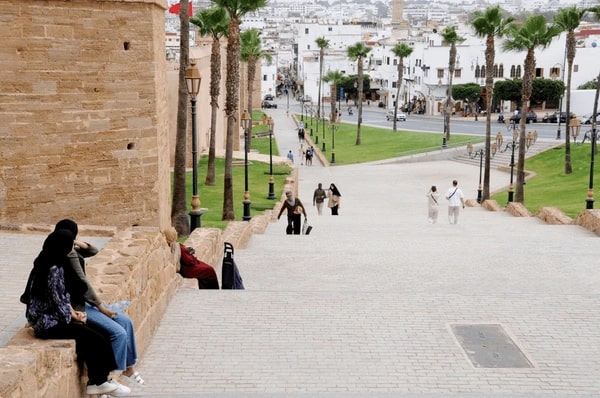
Seasonal Breakdown
Spring (March to May): Spring is one of the best times to visit Rabat. The temperatures are mild, ranging from 15°C to 25°C (59°F to 77°F), making it ideal for outdoor activities like walking tours or visiting parks. The city’s gardens, such as the Andalusian Gardens, are in full bloom, offering a beautiful backdrop for sightseeing. This is also a great time for cultural events, as the Mawazine Music Festival usually takes place in May.
Summer (June to August): Summer in Rabat can be quite hot, with temperatures reaching up to 35°C (95°F) during the day. However, the city’s coastal location brings cool breezes from the Atlantic Ocean, making evenings more comfortable. If you plan to visit during summer, mornings and late afternoons are the best times for sightseeing. Beaches near Rabat, such as Plage de Rabat and Plage des Nations, are popular destinations for those looking to cool off.
Fall (September to November): Fall is another excellent time to visit Rabat. The weather is similar to spring, with pleasant temperatures and fewer tourists. This season is ideal for exploring the city’s historic sites, like the Hassan Tower and the Kasbah of the Udayas, without the crowds. Fall also marks the start of the olive harvest, and you’ll find fresh, local olives in markets throughout the city.
Winter (December to February): Winters in Rabat are mild, with temperatures rarely dropping below 10°C (50°F). While it may be too cool for beach activities, winter is a great time to explore the city’s museums and cultural sites. Rain is more frequent in winter, so it’s a good idea to pack an umbrella or raincoat.
Events and Festivals
Rabat hosts several events throughout the year, adding excitement to your visit. The Mawazine Music Festival, held in late spring or early summer, is one of the biggest cultural events in the city. It brings together musicians from around the world for free concerts at various locations.
Islamic holidays, such as Ramadan and Eid al-Fitr, play an important role in Moroccan culture. While some businesses may close or reduce hours during these holidays, they provide a unique opportunity to observe local customs and traditions.
Local cultural celebrations, like the Feast of the Throne, offer insight into Moroccan heritage. This national holiday celebrates the monarchy with parades, fireworks, and other festivities.
Where to Stay in Rabat
Rabat offers a wide range of accommodations, from traditional riads to modern hotels, catering to different budgets and preferences.
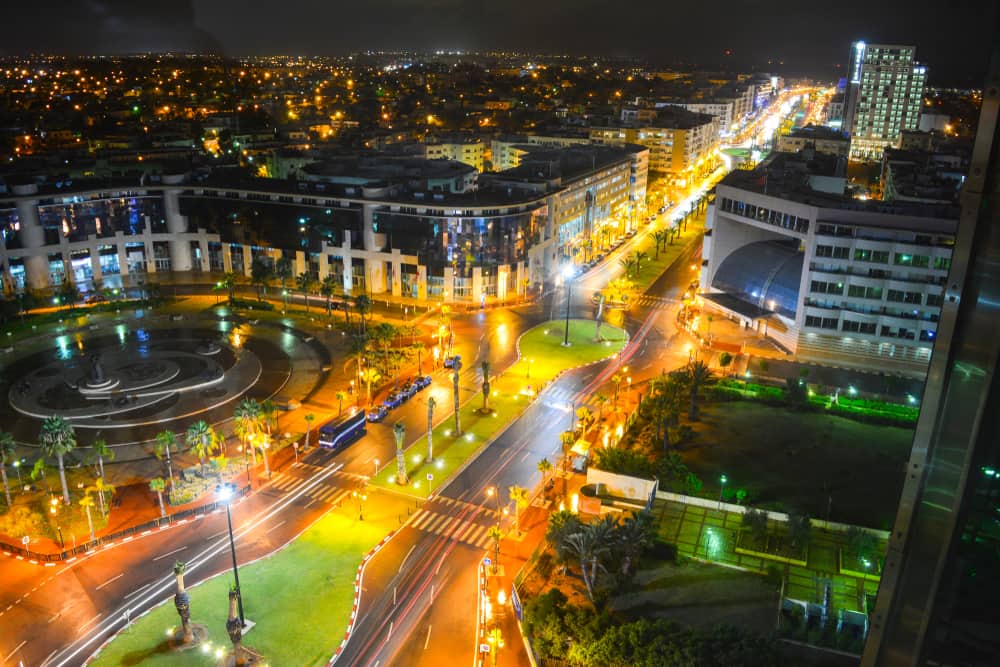
Types of Accommodations
Riads: Riads are traditional Moroccan houses with interior courtyards, often converted into charming guesthouses. Staying in a riad offers a unique experience, with beautiful architecture, personalized service, and a peaceful atmosphere. Many riads are located in the Medina, providing easy access to markets and historical sites.
Hotels: If you prefer modern amenities, Rabat has a variety of hotels ranging from budget options to luxurious five-star establishments. Hotels like the Sofitel Jardin des Roses provide upscale accommodations with swimming pools, spas, and fine dining, while mid-range options like the Belere Hotel offer comfortable stays at more affordable rates.
Vacation Rentals: For travelers seeking more independence, vacation rentals, such as apartments and villas, are available through platforms like Airbnb. These are great for families or longer stays, providing the comforts of home with kitchen facilities and extra space.
Top Neighborhoods for Staying in Rabat
Medina: If you want to experience traditional Moroccan life, the Medina is a great choice. Staying here allows you to be close to the souks (markets) and historical landmarks like the Kasbah of the Udayas. The narrow, winding streets give the area a unique charm, but it can be bustling, especially during the day.
Agdal: Agdal is a modern neighborhood known for its trendy cafés, restaurants, and shopping. It’s a great option if you’re looking for a more contemporary vibe with easy access to public transport. This area is also home to several business hotels, making it a convenient choice for business travelers.
Hassan: Hassan is a central neighborhood, close to iconic landmarks such as the Hassan Tower and Mohammed V Mausoleum. It’s an ideal location for first-time visitors, as you can easily walk to many of Rabat’s major attractions.
Souissi: For those seeking a quieter, upscale experience, Souissi offers luxury villas and high-end hotels. It’s a residential area with wide streets, greenery, and a calm atmosphere, making it perfect for travelers who prefer a peaceful stay.
Recommended Riads and Hotels
Top Riads:
- Dar Mayshad – A beautifully restored riad offering traditional Moroccan décor, excellent service, and a peaceful courtyard.
- Riad Kalaa – Located in the heart of the Medina, this riad features a rooftop terrace, a pool, and a cozy ambiance.
Hotels for Luxury Travelers:
- Sofitel Jardin des Roses – A five-star hotel with lush gardens, a spa, and fine dining. It’s one of the most luxurious options in Rabat.
Mid-Range and Budget Options:
- Belere Hotel – A comfortable and well-located hotel offering great value for money.
- Ibis Rabat – A budget-friendly option with clean rooms and a convenient location near the train station.
Choosing Between Traditional Riads and Modern Hotels
Riads and hotels each offer their own unique experiences. If you’re looking for an intimate, authentic Moroccan experience, staying in a riad is a great choice. Riads are often smaller, with personalized service and a focus on traditional Moroccan architecture and hospitality. You can expect beautifully decorated rooms, quiet courtyards, and attentive hosts.
Hotels, on the other hand, provide more modern amenities, such as swimming pools, gyms, and restaurants. They tend to have more rooms, which can make them less personal but more convenient for families or travelers looking for luxury services.
Exploring Rabat
Rabat is a city that can easily be explored on foot, by bike, or using the city’s efficient public transportation system. Whether you prefer guided tours or wandering around on your own, there are plenty of options to discover the rich history and culture Rabat has to offer.
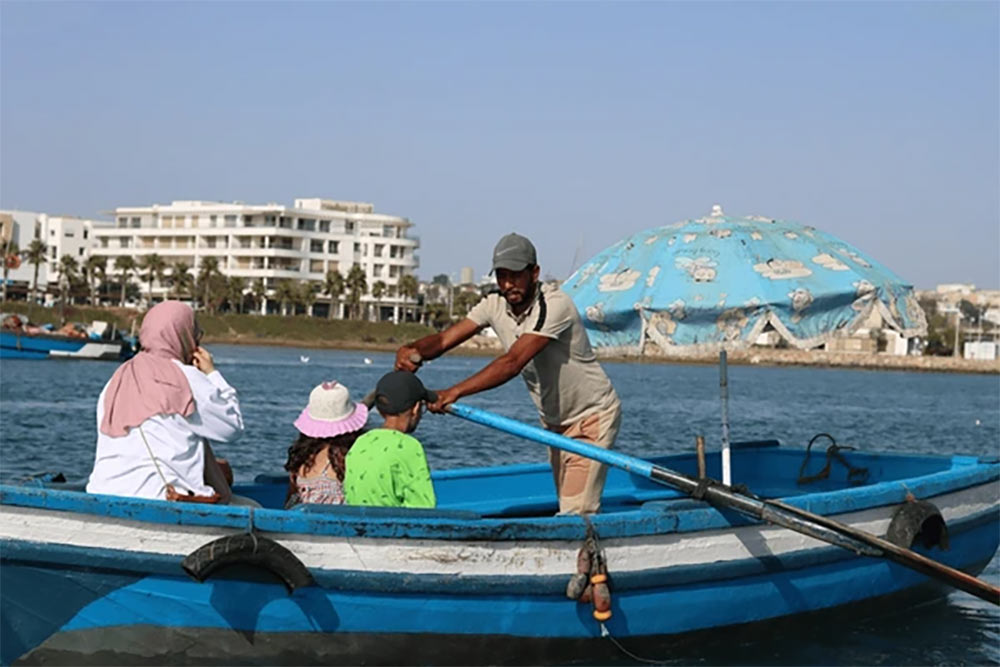
Public Transportation
Rabat’s public transport system is well-organized and includes buses, trams, and taxis. The tram is the easiest and most efficient way to travel around the city, connecting key neighborhoods such as Agdal, Hassan, and the Medina. Tickets are inexpensive, and the tram stops at many major attractions, including the Hassan Tower and the Royal Palace. Buses are also available and run regularly, though they can be slower due to traffic.
Taxis are plentiful in Rabat and are a convenient way to travel short distances. There are two types of taxis: Petit taxis, which are small and can only take up to three passengers, and Grand taxis, which are larger and travel between cities. Make sure to agree on a fare before starting your trip if the taxi meter is not used.
Biking and Walking
Rabat is a bike-friendly city with several bike rental stations. You can cycle along the Bouregreg River, visit the Andalusian Gardens, or take a leisurely ride through the wide streets of the Ville Nouvelle. Walking is also a great way to explore Rabat, especially in the Medina and the Kasbah of the Udayas, where the narrow alleys are best navigated on foot.
Guided Tours vs. Self-Guided Exploration
For first-time visitors, guided tours can offer in-depth information about Rabat’s history and landmarks. Tours are available for specific areas like the Kasbah of the Udayas, or broader city tours that cover multiple sites in one day. Local guides provide insights into the city’s cultural heritage, making the experience more enriching.
If you prefer to explore at your own pace, a self-guided tour is also a great option. Rabat is a relatively safe and easy city to navigate, with many attractions located within walking distance of each other. Maps and mobile apps make it easy to find your way around and discover lesser-known spots.
Things to Do in Rabat
Rabat is packed with cultural, historical, and outdoor activities that cater to a wide range of interests. Whether you enjoy visiting ancient sites, relaxing by the river, or indulging in Moroccan cuisine, Rabat has something for everyone.
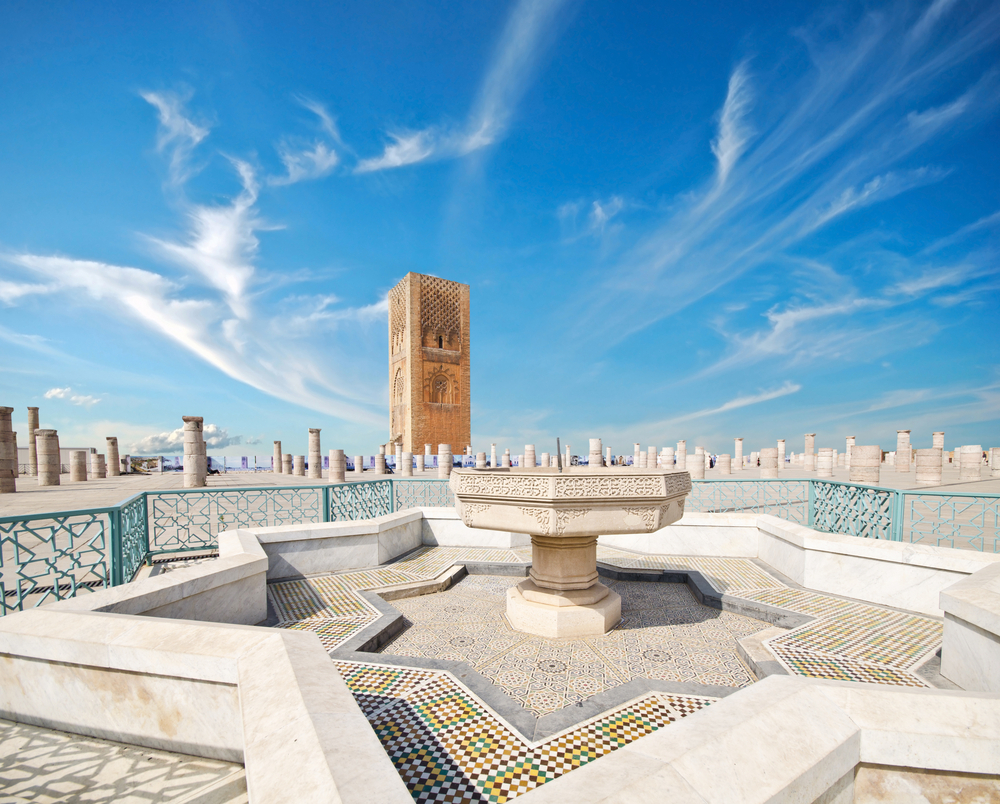
Iconic Landmarks and Must-Visit Sites
Hassan Tower: One of Rabat’s most famous landmarks, Hassan Tower was intended to be the tallest minaret in the world. Although it was never completed, the tower stands as a symbol of Rabat’s rich history. You can also visit the nearby Mohammed V Mausoleum, a beautiful structure where members of the royal family are buried.
Kasbah of the Udayas: This ancient fortress overlooks the Atlantic Ocean and the Bouregreg River. Inside, you’ll find narrow streets lined with white and blue buildings, reminiscent of Andalusian architecture. The Kasbah also houses the Andalusian Gardens, a peaceful spot perfect for relaxing.
Royal Palace (Dar al-Makhzen): While the Royal Palace itself is not open to the public, visitors can admire the grand exterior and explore the surrounding area. The nearby Hassan Mosque is also worth a visit.
Chellah Necropolis: This historic site contains the ruins of an ancient Roman city and a medieval Islamic necropolis. Walking through the overgrown ruins gives you a glimpse into Rabat’s past, blending Roman and Islamic architecture.
Outdoor Activities
Rabat is home to beautiful outdoor spaces where visitors can relax and enjoy the natural surroundings.
Walking along the Bouregreg River: The Bouregreg River separates Rabat from the neighboring city of Salé and offers scenic walking paths along its banks. You can also take a boat ride across the river or visit one of the cafés that line the waterfront.
Beaches in Rabat and Sale: Rabat’s beaches, such as Plage de Rabat and Plage des Nations, are great for sunbathing or taking a dip in the Atlantic Ocean. Sale, just across the river, also has several quieter beaches.
Parks and Green Spaces: Rabat has many parks and gardens, including Jardin d’Essais and the Andalusian Gardens. These green spaces offer a peaceful retreat from the city and are perfect for picnics or a leisurely stroll.
Culinary Experiences
Rabat’s food scene is a blend of traditional Moroccan flavors and modern dining experiences. Some of the must-try dishes include:
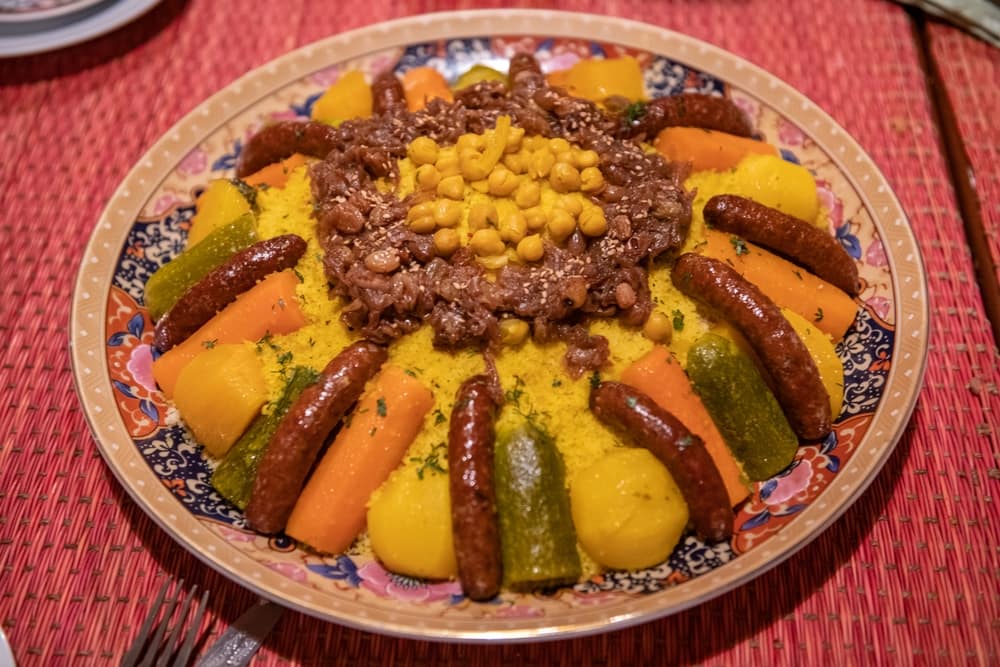
Couscous: A classic Moroccan dish made with steamed semolina grains, served with vegetables and meat. Fridays are traditionally couscous day in Morocco, and many restaurants offer it as a special.
Tagine: This slow-cooked dish is made in a clay pot and comes in many variations, including lamb, chicken, and vegetable tagines. It’s flavored with a mix of spices, making it a hearty and delicious meal.
Pastilla: A savory-sweet pie made with layers of flaky pastry filled with spiced meat (usually pigeon or chicken), almonds, and cinnamon.
You can enjoy these dishes at local restaurants, ranging from street food stalls in the Medina to fine dining establishments. For a more immersive experience, consider joining a cooking class or taking part in a food tour to learn how to make traditional Moroccan dishes.
Shopping in Rabat
Rabat is a great place to shop for traditional Moroccan goods, especially in the Medina. The markets, or souks, are filled with colorful carpets, spices, handmade crafts, and jewelry. Be prepared to haggle, as bargaining is a common practice in Moroccan markets.
For a more modern shopping experience, visit one of Rabat’s shopping malls, such as Mega Mall or Arribat Center, where you’ll find international brands and a range of dining options.
Nightlife and Entertainment
Rabat’s nightlife is a mix of cultural shows, live music venues, and laid-back cafés. Many bars and restaurants offer live performances, ranging from traditional Moroccan music to contemporary bands. The city also hosts cultural events and exhibitions at places like the Mohammed VI Museum of Modern and Contemporary Art, providing a glimpse into Morocco’s vibrant art scene.
Day Trips from Rabat
If you have extra time, there are plenty of nearby destinations worth exploring.
- Visiting Salé: Just across the river from Rabat, Salé is a quieter city with a rich history. Visit the Republic of Salé, an old pirate republic, or explore the ancient Sala Colonia, a Roman settlement.
- Day Trip to Casablanca: A short train ride from Rabat, Casablanca is Morocco’s largest city. Visit the Hassan II Mosque, the largest mosque in Africa, or explore the city’s modern architecture and vibrant markets.
- Exploring Meknes and Volubilis: Meknes, one of Morocco’s imperial cities, is known for its beautiful gates and palaces. Nearby, the ancient Roman city of Volubilis offers well-preserved ruins, making it a perfect day trip for history buffs.
Art and Culture
Rabat is a cultural hub, with several museums and galleries showcasing Moroccan art and history. The Mohammed VI Museum of Modern and Contemporary Art is one of the highlights, offering a collection of Moroccan and international artworks.
Local cultural performances are another way to experience Rabat’s rich heritage. You can attend traditional music and dance performances or visit cultural centers that host events and exhibitions year-round.
Practical Tips for Rabat
When visiting Rabat, knowing a few practical tips will make your trip smoother and more enjoyable.
Money and Currency
The local currency in Rabat is the Moroccan Dirham (MAD). You can exchange currency at banks, exchange offices, or ATMs, which are widely available throughout the city. Major credit cards are accepted in most hotels and restaurants, but smaller businesses and markets may prefer cash, so it’s a good idea to carry some local currency.
Language
Arabic is the official language of Morocco, but French is widely spoken, especially in Rabat. Many people in tourist areas also speak some English. Learning a few basic phrases in Arabic or French can enhance your experience and help you interact with locals.
- “Salam” (Hello)
- “Shukran” (Thank you)
- “Oui” (Yes)
- “Non” (No)
Cultural Etiquette
Respecting local customs is important when visiting Rabat. Morocco is a conservative country, so it’s recommended to dress modestly, especially when visiting religious sites. For women, this means covering shoulders and avoiding short skirts or shorts. For men, it’s best to avoid wearing sleeveless shirts in public.
When visiting mosques, always remove your shoes and dress appropriately. It’s also polite to ask for permission before taking photos of people or private properties.
Getting a SIM Card or Mobile Internet
If you need to stay connected during your trip, consider purchasing a local SIM card. Providers like Maroc Telecom, Inwi, and Orange offer prepaid SIM cards with data plans. You can buy these at the airport, in shops, or at mobile kiosks around the city. Rabat has good mobile coverage, and having a local SIM card can be helpful for navigation and communication.
Electricity and Adapters
Morocco uses Type C and Type E plugs, with a standard voltage of 220V. If you’re coming from a country with a different plug type or voltage, make sure to bring an adapter and check your devices for compatibility.
Safety and Health in Rabat
Rabat is generally considered a safe city for tourists, but it’s always wise to take precautions, especially in crowded areas.
Health Precautions
Healthcare in Rabat is easily accessible, with numerous pharmacies, clinics, and hospitals available. If you need medical assistance, pharmacies are often the first stop for over-the-counter medication. Some pharmacists speak English or French, making it easier to communicate.
Morocco doesn’t have specific vaccination requirements for travelers, but it’s always a good idea to stay up to date on routine vaccines, such as tetanus, hepatitis A, and typhoid, especially if you plan to explore rural areas.
When it comes to food safety, stick to bottled water and avoid drinking tap water. Rabat’s street food is generally safe, but make sure to choose vendors that maintain good hygiene practices.
General Safety Tips
Rabat is considered a safe destination for tourists, but like any major city, you should remain aware of your surroundings. Avoid carrying large sums of money, and keep your belongings secure, especially in crowded markets like the Medina.
Be cautious of common scams, such as unofficial tour guides who may offer services and then demand payment. It’s always best to use licensed guides or services recommended by your hotel. When taking taxis, ensure the driver uses the meter or agrees on a price before starting the journey.
Emergency Numbers and Contacts
In case of an emergency, it’s important to know the local emergency numbers:
- Police: 19
- Ambulance: 15
It’s also a good idea to keep the contact information of your country’s embassy or consulate in Rabat, just in case you need assistance.
Conclusion
Rabat is a city rich in history, culture, and natural beauty, offering something for every type of traveler. Whether you’re exploring its ancient landmarks, enjoying its culinary delights, or simply relaxing by the Bouregreg River, Rabat is a destination that leaves a lasting impression. With its welcoming locals, vibrant culture, and mix of old and new, Rabat promises a memorable visit.
FAQs
Is English spoken in Rabat?
While Arabic and French are the main languages spoken in Rabat, English is widely understood in tourist areas, hotels, and restaurants. It’s helpful to know a few words in Arabic or French, but you’ll likely be able to communicate in English in most places.
Is Rabat a beautiful city?
Yes, Rabat is known for its blend of historical architecture and modern charm. With stunning landmarks like the Hassan Tower, scenic views of the Atlantic Ocean, and peaceful spots like the Andalusian Gardens, Rabat offers a unique mix of beauty and culture.
Is Rabat expensive to visit?
Rabat is generally more affordable compared to other major Moroccan cities like Marrakesh or Casablanca. You’ll find a wide range of accommodations, dining options, and activities to fit different budgets. Whether you’re traveling on a shoestring or looking for luxury, Rabat offers plenty of value for money.
